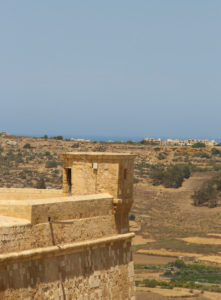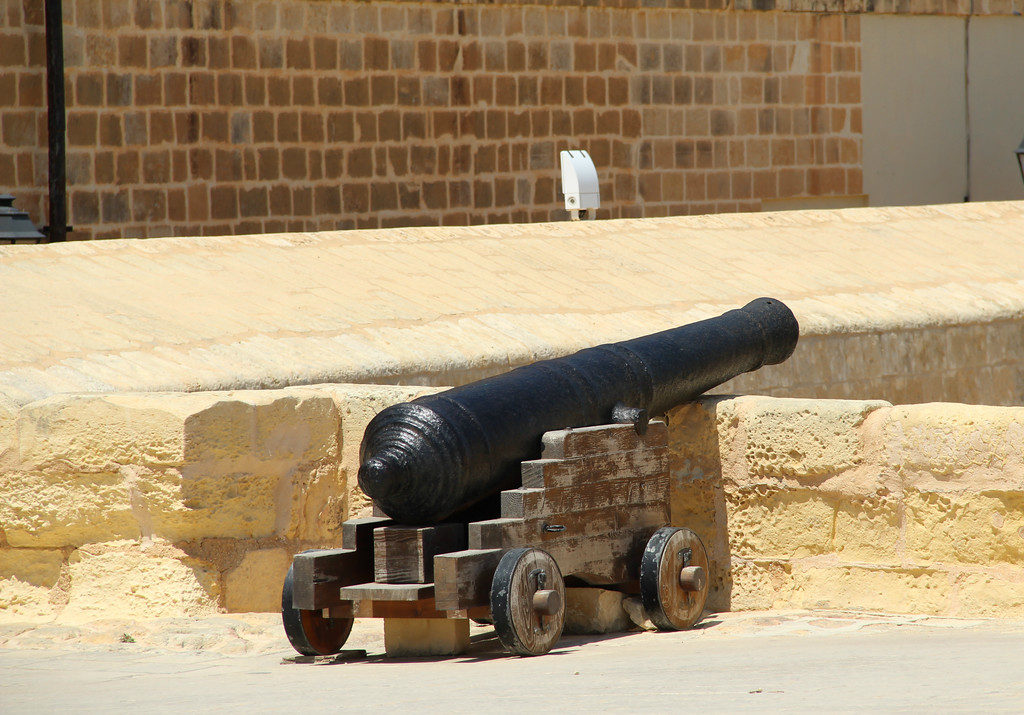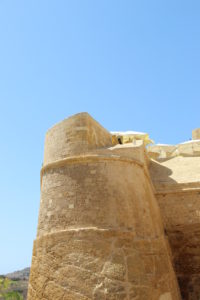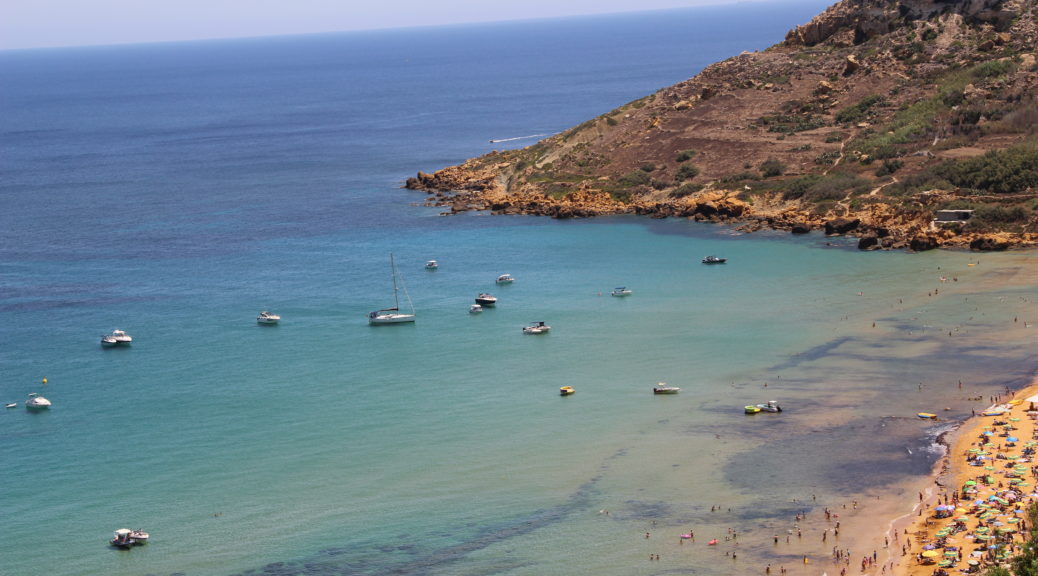
Malta – The Island of Gozo
After our Tauck tour had ended, we spent an extra day in Malta and arranged for a private tour through Amy at guidedtoursmalta.com. Although Amy was unavailable on the extra day we had in Malta, she arranged for us to tour with one of her colleagues. We chose a full day tour of Gozo, but we were able to customize it since it was a private tour. Our guide picked us up at our hotel with a driver and we were on our way. We drove to Paradise Bay where we boarded a ferry which took us to Gozo. The ferry ride was about a half hour.
Gozo is part of Malta and the second largest island (after Malta) of the Maltese archipelago. It is described as having a more relaxed pace and is a favorite vacation spot for residents of Malta as well as tourists. Gozo is thought to be the island of Ogygia in Homer’s Odyssey, where Homer spent seven years under the spell of a sea nymph. It has been the setting for several movies; part of the TV series, Games of Thrones, was also filmed here.
The pictures below are ones I took from the ferry between Malta and Gozo.

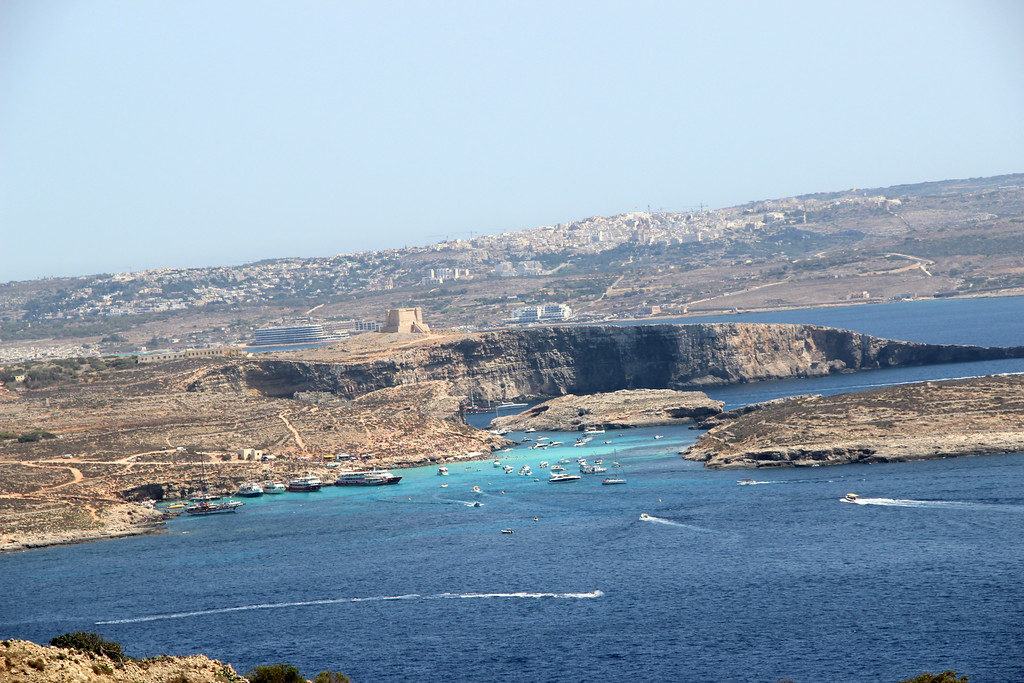

After we arrived on Gozo, we met another driver who took us to Xewkija where we visited the Church of John the Baptist, also known as the Rotunda Church. It can be seen from almost everywhere in Gozo. The different communities in Gozo celebrate the day of their patron saint. John the Baptist is the patron saint of Xewkija and he is celebrated on June 24th. We visited just about a week after this so the church was still decorated in red for the celebration.


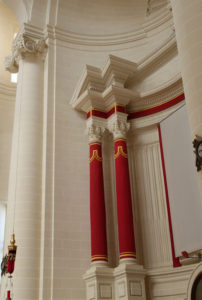
The original church dates back to the 1600’s. When the new church was built, parts of the original church were preserved in the Museum of Sculpture which is connected to the new church. The pictures below were taken in the Museum of Sculpture and include the original altar, an altar piece, the confessional as well as other artifacts. The floor of the museum consists of tombstones from the old church. From the museum, we could also take an elevator to the dome which provided beautiful views of the countryside.
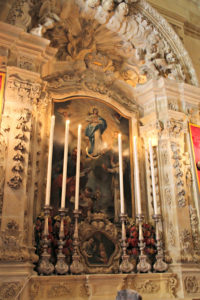
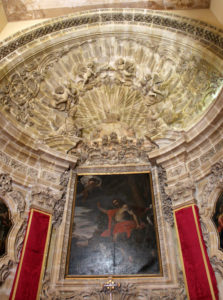
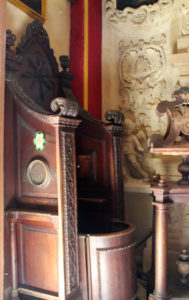
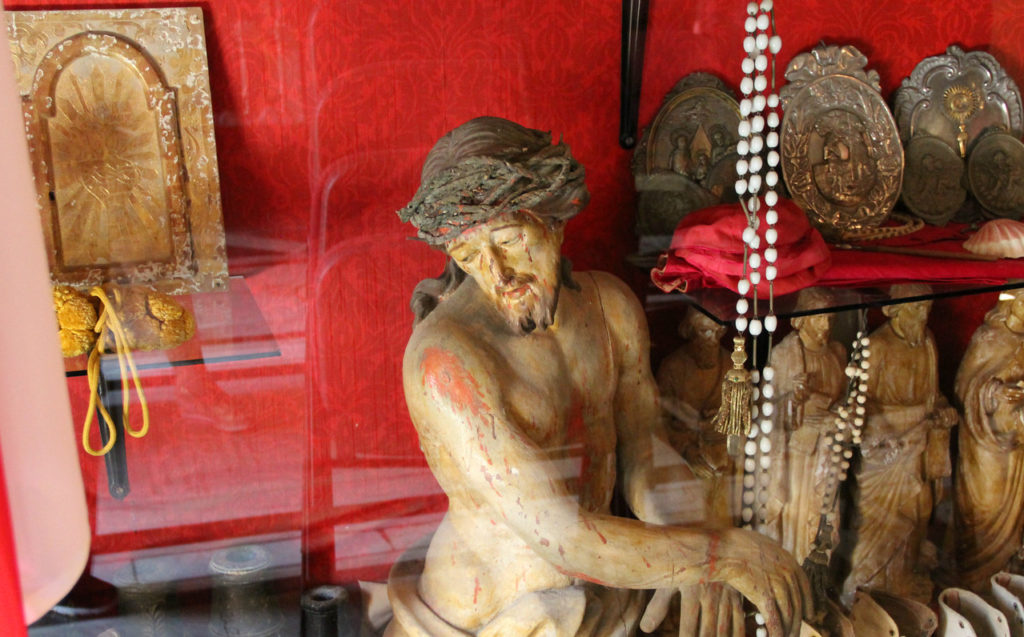



The new church was built between 1951 and 1971 on the same site as the old church. The congregation came together in many ways to help construct the church. Many church members actually helped to physically build the church. Our driver’s father was one of the individuals who assisted with the construction. People were also very generous with their financial support which came in many different ways.
Xewkija parishioners – Xewkija at that time had a population of 700 families – responded to an appeal for contributions for the new church and as a start contributed Lm18,000 in cash and Lm2,000 worth of earrings, rings and gold chains donated by women. Eight persons offered Lm500 each for the eight ferro-concrete support columns of the church…Farmers, poultry breeders and fishermen also helped by contributing a share of their produce while two fairs were held annually in which rabbits, hens and eggs donated by parishioners were auctioned. (Source: June 3, 2002 article by Michael Testa in the Times Malta)
The Lm in the article refers to Maltese lira which was in use at the time. The Lm18,000 contributed in cash equates to approximately $49,000; the Lm2,000 in jewelry is worth about $5,400; and the Lm500 contributed by the individuals for the concrete support columns equals about $1,400 each.
The eight columns support the dome of the church. The columns are made of concrete which is covered with stone. The dome is 89 feet in diameter and weighs 45,000 tons. It is the third largest unsupported dome in the world. I have included a picture of the church as well as two of the dome (one purchased from Shutterstock).
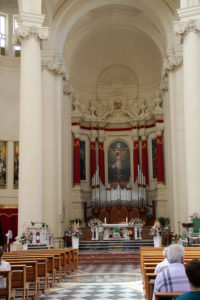
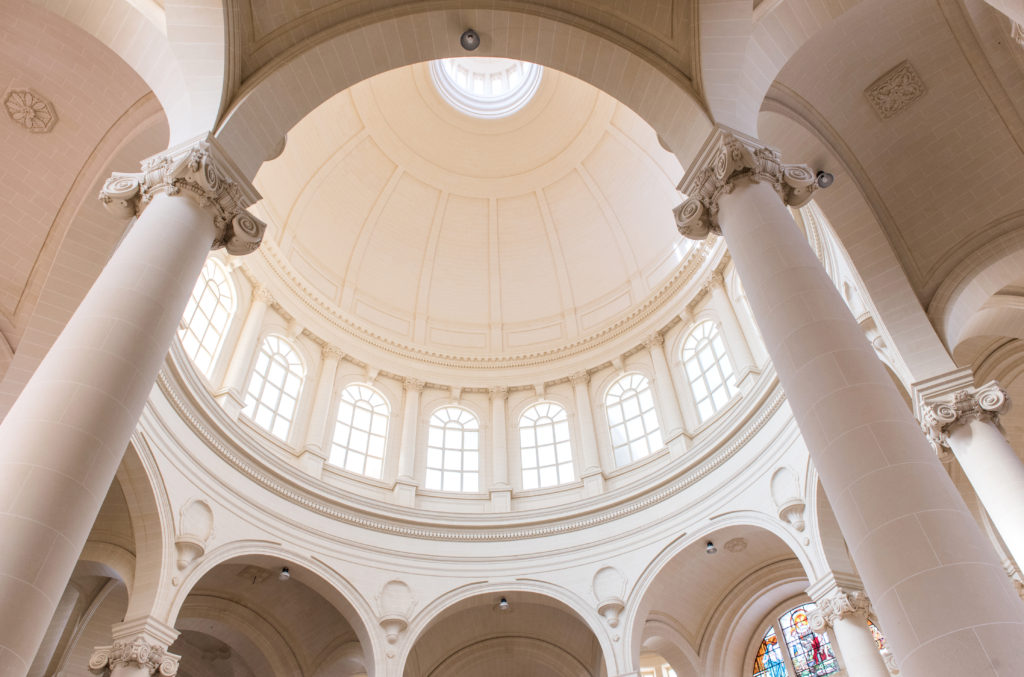

The first two pictures below will give you a closer look at the altar. It is carved from Carrara Marble (from Italy – the same marble Michelangelo used in his sculptures) and is beautiful. The floor is also polished Carrara Marble and was crafted by a resident of Gozo. The fourth picture is of a statue of St. John the Baptist. It is a wood carving completed in 1845 by Paul Azzopardi, who was a Maltese artist. There is also a picture of a stained glass window – this is one of three stained glass windows in the church.
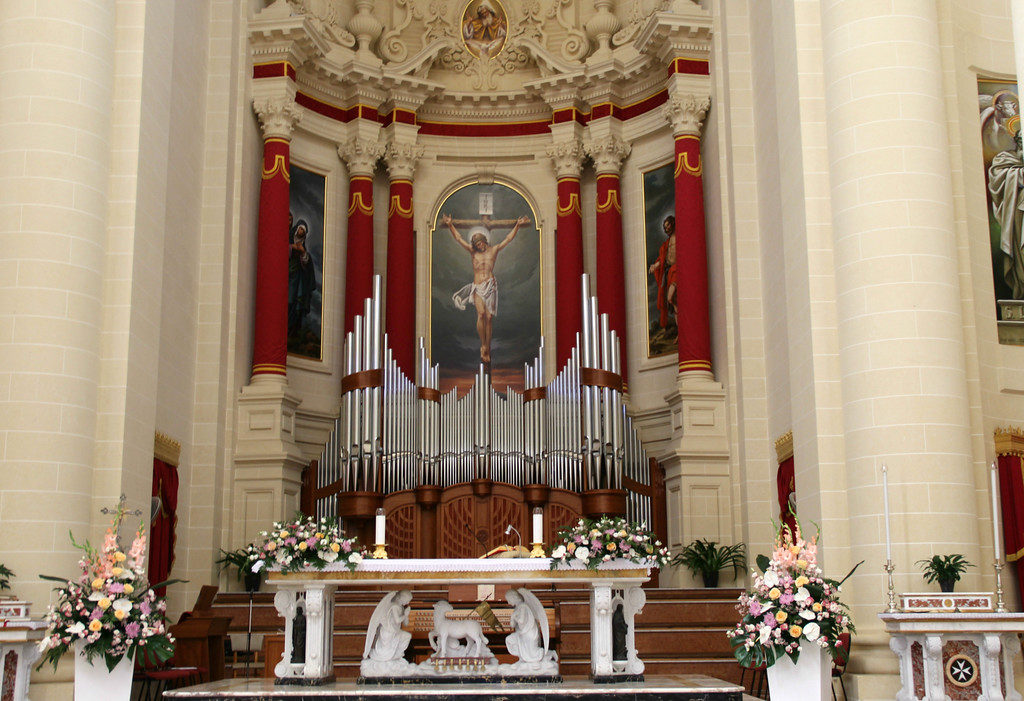
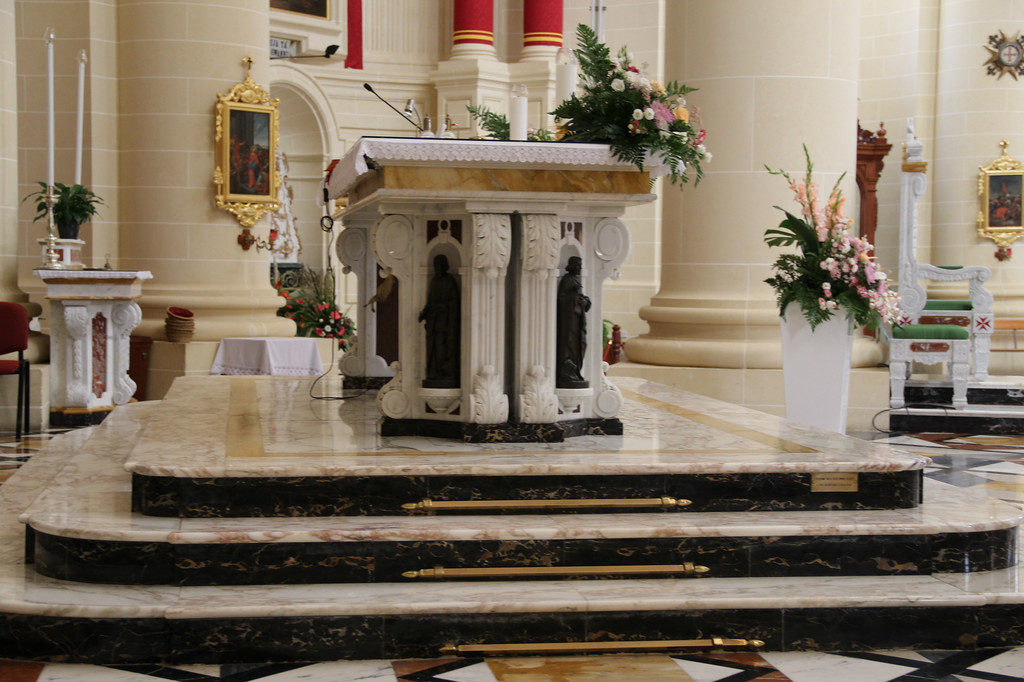
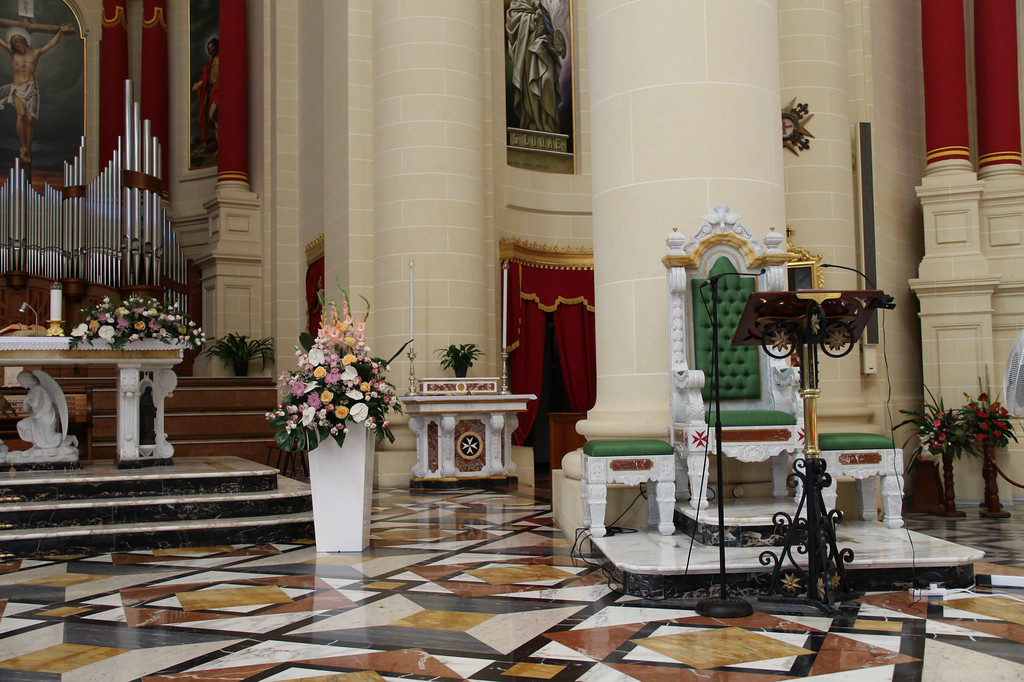
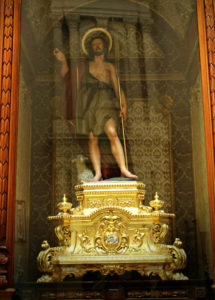

After visiting the church, we drove to the Ggantija Temples which are located in Xaghra on the northern side of Gozo. The two temples were built between 3600 and 2500 BC (as determined by chemical dating), making them over 5,000 years old. They are the second oldest manmade religious structure in the world and have been named a UNESCO World Heritage Site. They went undiscovered until the 19th Century.
We began our visit in the Interpretative Center where we saw some of the artifacts. There were several human and animal figurines (a human one is pictured below). The figures were found in the same area. It is believed they were once wrapped together in a material that didn’t survive, perhaps an animal skin. When I saw this figurine, I thought it was a reproduction – but it is the actual artifact. The next one pictured is a pair of “corpulent” figures; I learned that corpulent is another word for obese. This is considered one of the most complete figures that was found.
The third picture shows the layout of the two temples. There is a wall surrounding both of them. The larger temple is the older one, dating back to 3,600BC and is the better preserved. The temples are built of large stones, called megaliths, some weighing up to 50 tons. It is an amazing feat that these were built considering the wheel had not yet been invented. Stonehenge and the Giza Pyramids were both built after the Ggantija Temples. The fourth picture shows how the materials may have been moved. Several round stones were found (fifth picture) which could have been used under a platform to bring the stones to the temple site.
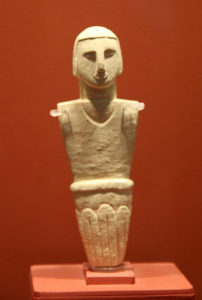
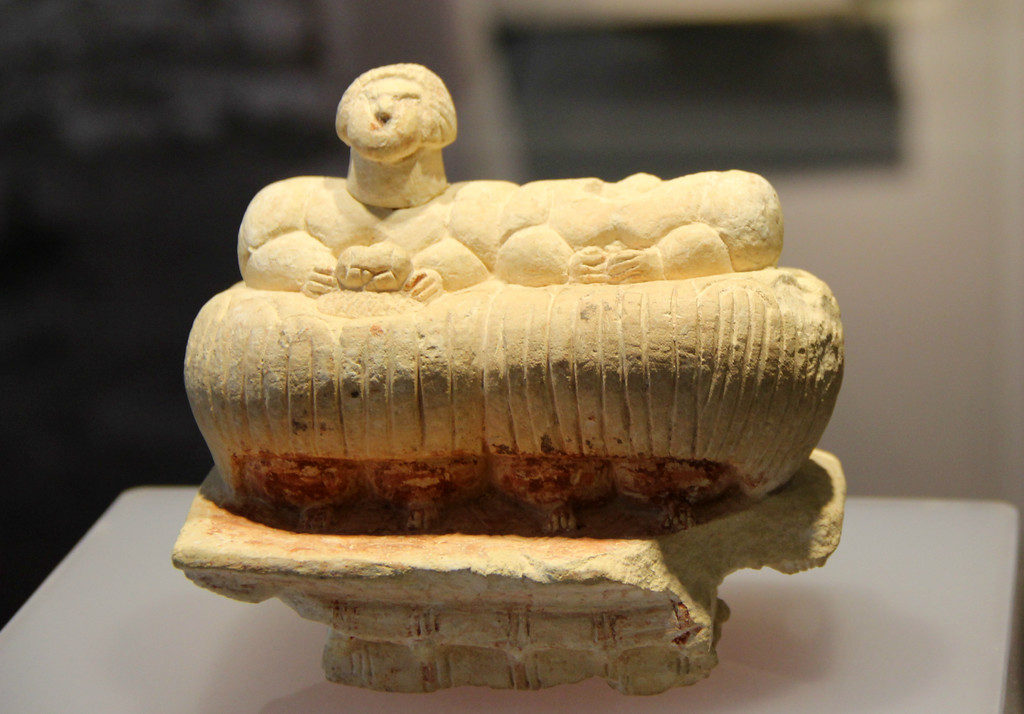
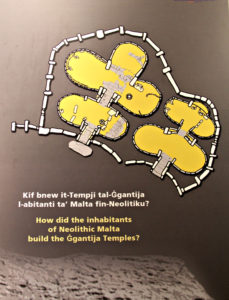

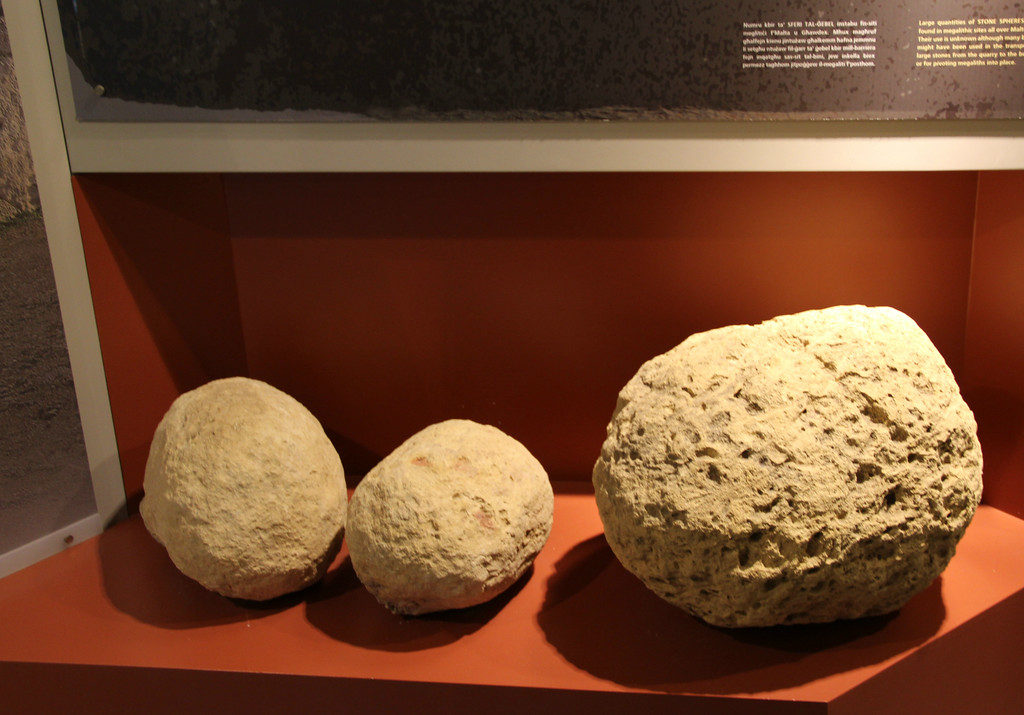
We then went outside, first seeing the wall that surrounded both temples. It is made of coralline limestone which is a harder rock and may have resulted in the temples surviving as well as they have. Parts of the wall are in the first two pictures. It is amazing how well the rocks fit together – especially since they did not have mortar. As we walked about, we saw a few lizards sunning themselves (it was a very hot day) as well as graffiti dating back to the 1800’s, around the time the temples were discovered. Graffiti is strictly forbidden now, but the old graffiti has been preserved. I added an arrow to the picture with the graffiti where a date has been included. The last picture in this section is the Church of John the Baptist Church (or the Rotunda Church). This is the same church we first visited when arriving in Gozo – and as I noted earlier, it can be seen in all parts of Gozo. Indeed, as you can easily see, it was clearly visible even though we were no longer in Xewkija.



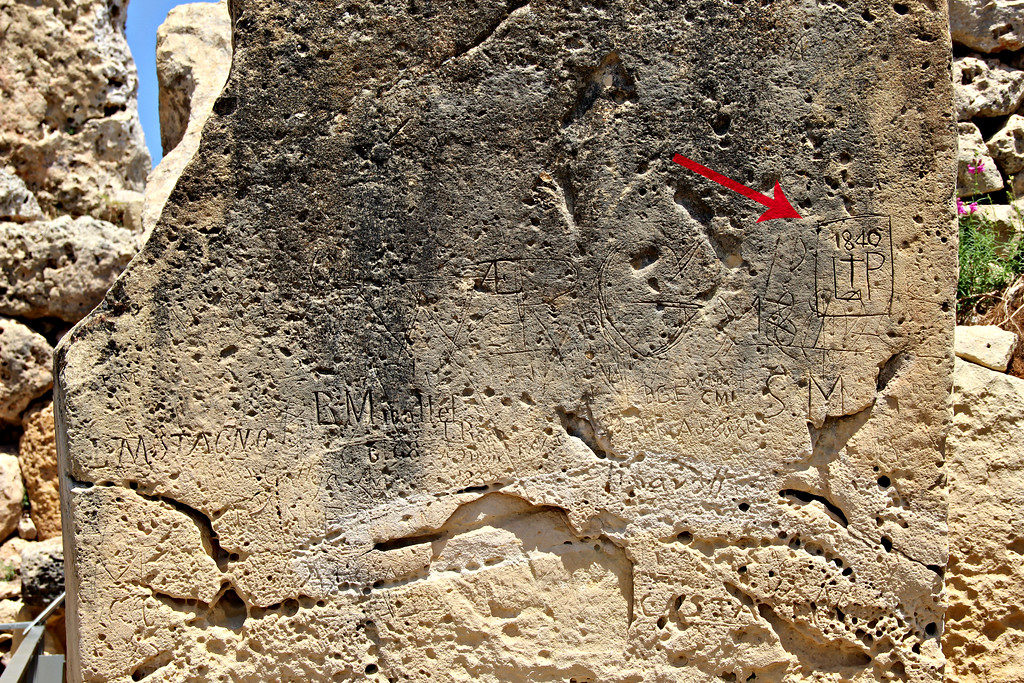
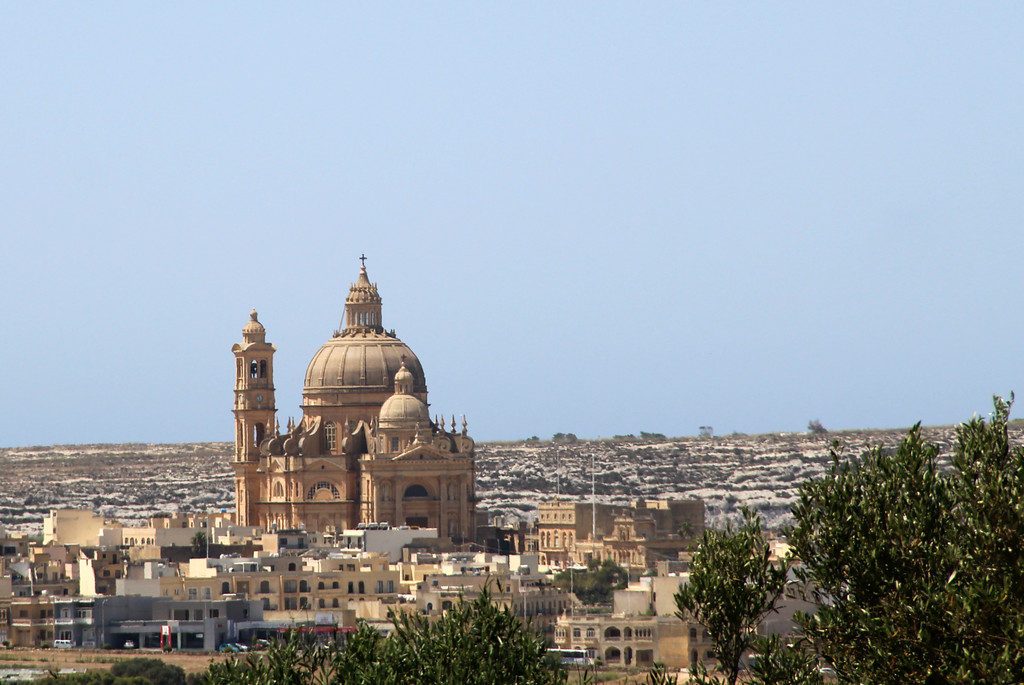
Next we walked into the actual temple area. A boardwalk has been built so visitors can easily see the temples without inadvertently doing any damage. The second and third pictures show part of the temple that was found in 1827. Paintings were fortunately made because this section of the temple collapsed. It was reconstructed based on the earlier paintings. This part of the temple has three sections separated by pillars. There was glass covering part of the walkway which revealed large holes cut all the way through the stone (fourth picture). Archeologists are not sure of their purpose but there is speculation they were used for liquid sacrifices. The last picture is believed to be an altar and was part of the second temple we walked through. Seeing these ruins, and trying to grasp their age and significance, was an amazing experience. I will also add that it was very hot and there is little shade that can protect visitors from the heat of the sun. If you visit, I would suggest you bring a hat, sunscreen and water!
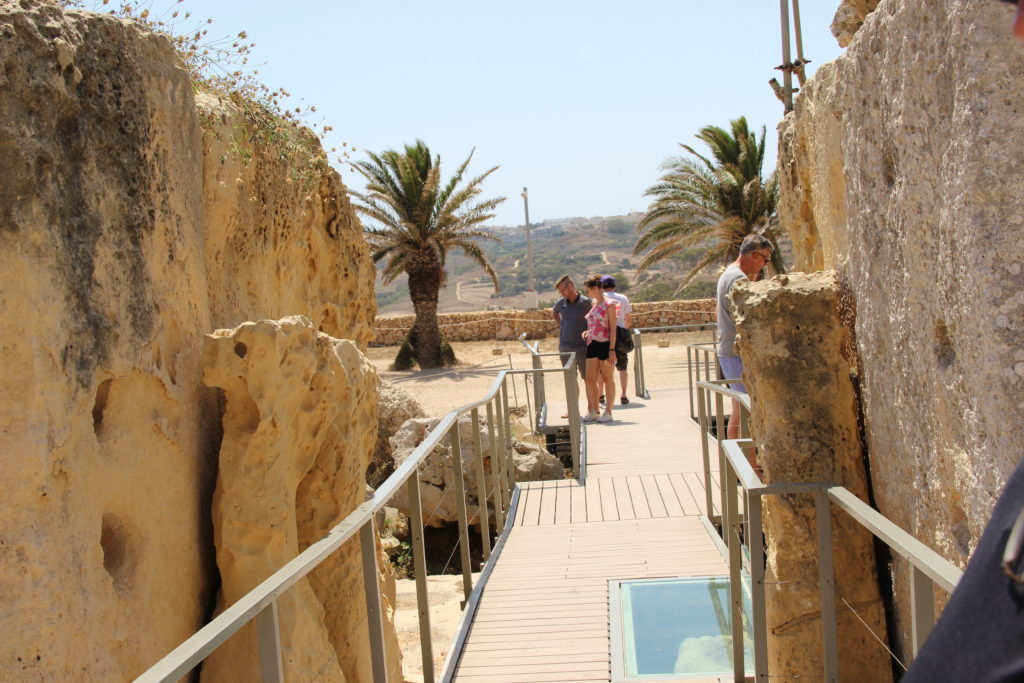
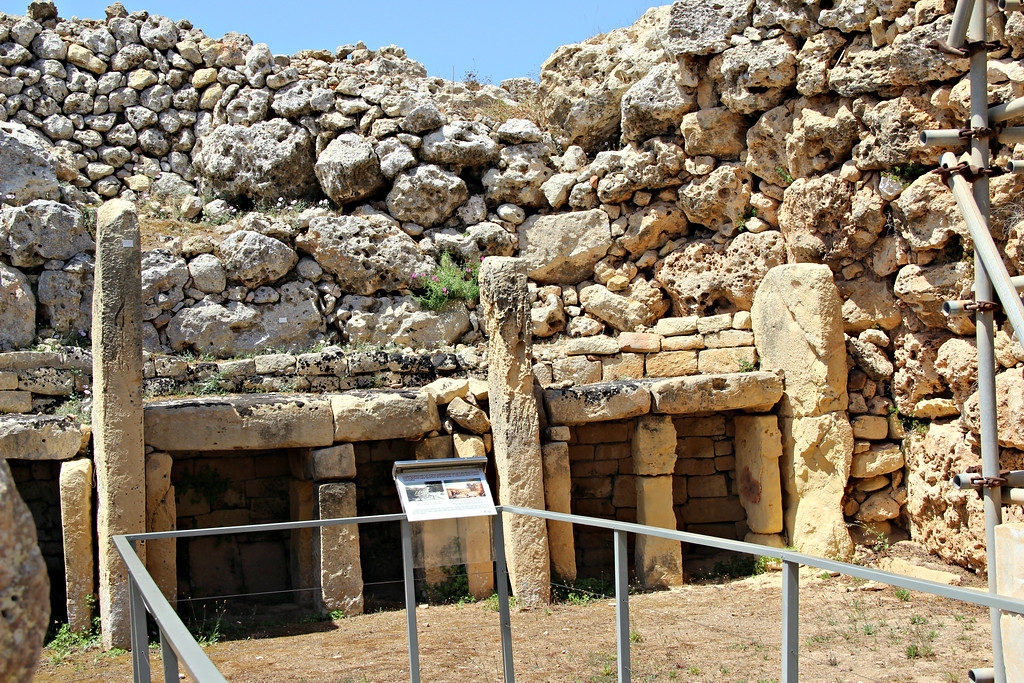
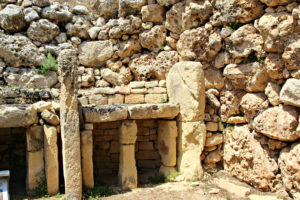

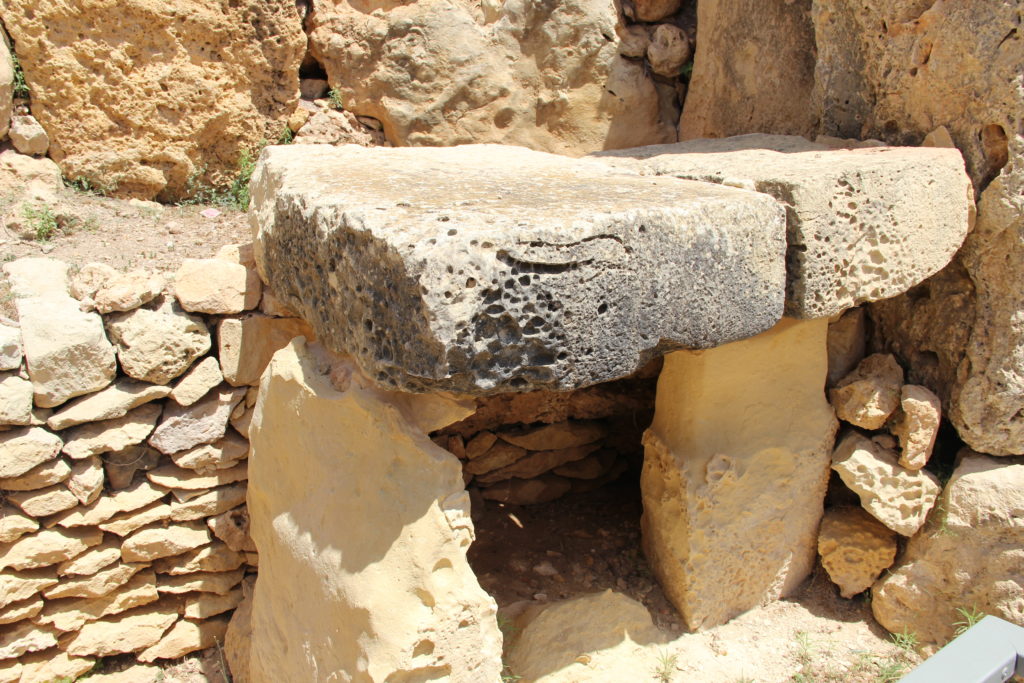
We were next on our way to lunch, but on a road that gave us beautiful views of Xlendi Bay. A sandy beach and opportunities for swimming, snorkeling and diving make it a popular spot. We also saw the statue of Christ the Redeemer, which sits on a 320-foot hill commonly called Tas-Salvator. There has been a cross or statue here since 1904, although they were not able to survive the elements. This statue was constructed in the 1970’s and is made of concrete.
The last two pictures are of salt pans. The water in the Mediterranean Sea contains about 3% salt so is an excellent source of salt. Water comes into this area either naturally or is physically added to the salt pans. As the water evaporates, the salt can be collected. Here is more information about the salt pans from the website, visitgozo.com:
They are part of the centuries-old Gozitan tradition of Sea-Salt production that has been passed down within certain families for many generations. During the summer months, locals can still be seen scraping up the crystals of salt. Once collected, the salt is stored and processed in the caves that have been carved into the coastal rock.
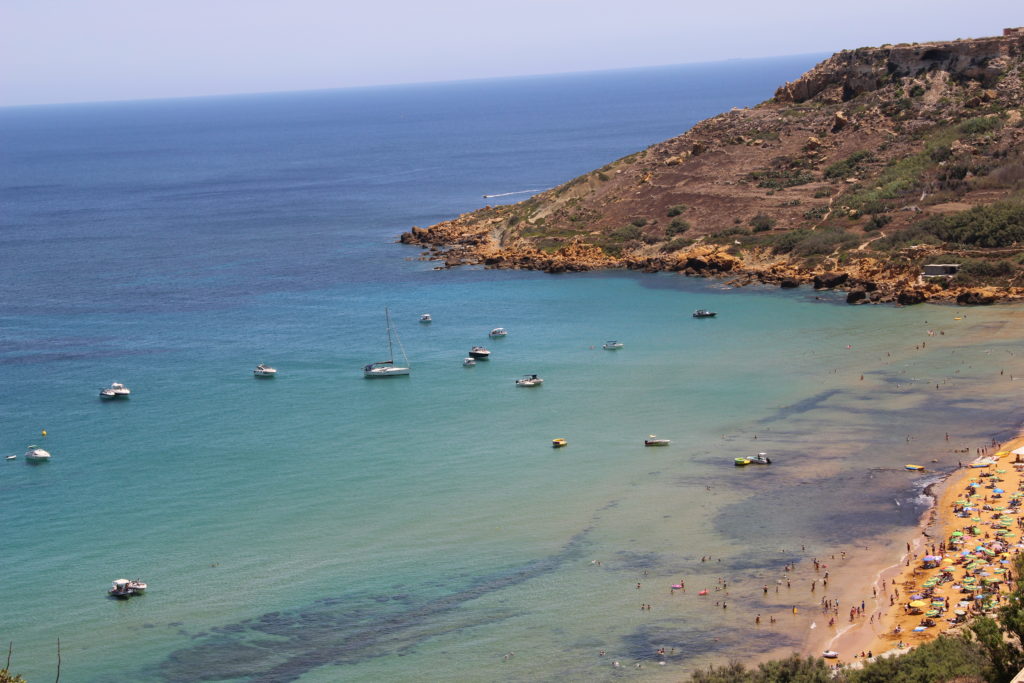



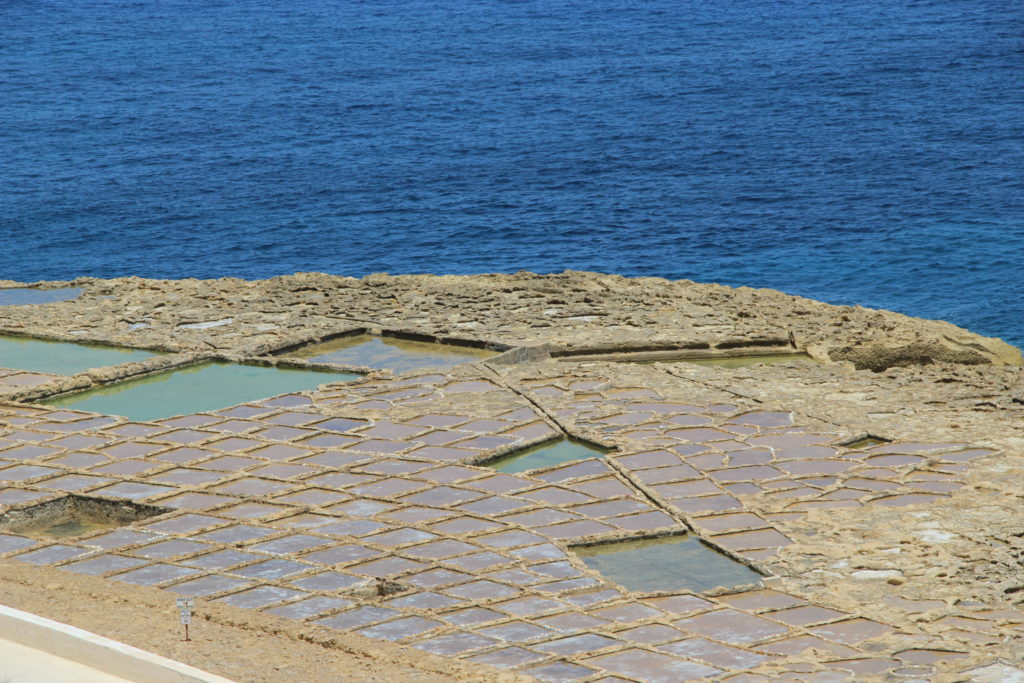
We also visited the Citadel or Cittadella which is in Victoria, also known as Rabat. Victoria is the capital of Gozo. The Citadel is the “old” Victoria and is located at the top of a flat hill, a site probably chosen so it could be better defended. The first picture below is one of the Citadel – we took it while at the Church of John the Baptist. The Citadel’s initial fortifications were made around 1500BC. Jumping to 1551, the Citadel was captured by the Turks, resulting in damage to the existing structure and about 5,000 people being put into slavery. In 1565, in the “Great Seige of Malta,” the Knights of St. John and the Maltese people defeated the Turks. The Knights fortified Valletta and established it as the capital. In Gozo, they strengthened the Citadel’s fortifications and built watchtowers to warn of attacks. Until 1634, all residents of Gozo were required by law to spend their nights inside the Citadel which provided them with more protection. There were attacks by other nations, but Gozo defended itself, eventually became an independent country (just for one year – in 1798) and was then reunited with Malta in 1799 under British rule. While the island of Malta was heavily bombed during World War II, Gozo, for the most part, was spared.
We walked up a fairly steep hill and entered the Citadel through the main gate. This brought us to the square which was dominated by the Cathedral of the Assumption, honoring the Assumption of Mary. This is at least the third temple or church on the site, the first being a Roman temple dedicated to the goddess Juno. The present church was dedicated in 1716. The church is made of limestone from the area. There is a statue of Mary near the top of the facade and a bell tower on the left. In 1864, the church became the seat of the Roman Catholic Diocese of Gozo and so its status was elevated to that of a cathedral.
We walked up the steps and then followed the path to the left of the church which took us to narrow roads and alleys that are part of the Citadel. In earlier times, everyone lived within the Citadel. Then the population expanded outside the walls. In the 1600’s, as noted earlier, people were required to spend their nights within the Citadel to better protect them from potential invaders. There are still a few families whose homes are within the Citadel. Because the Citadel was designed for protection, there needed to be a source of food. Three large grain silos were built so that bread could be made, a staple food at the time. Later the grain silos were converted to water tanks and were in use until 2004. Now they have been restored and can be visited.
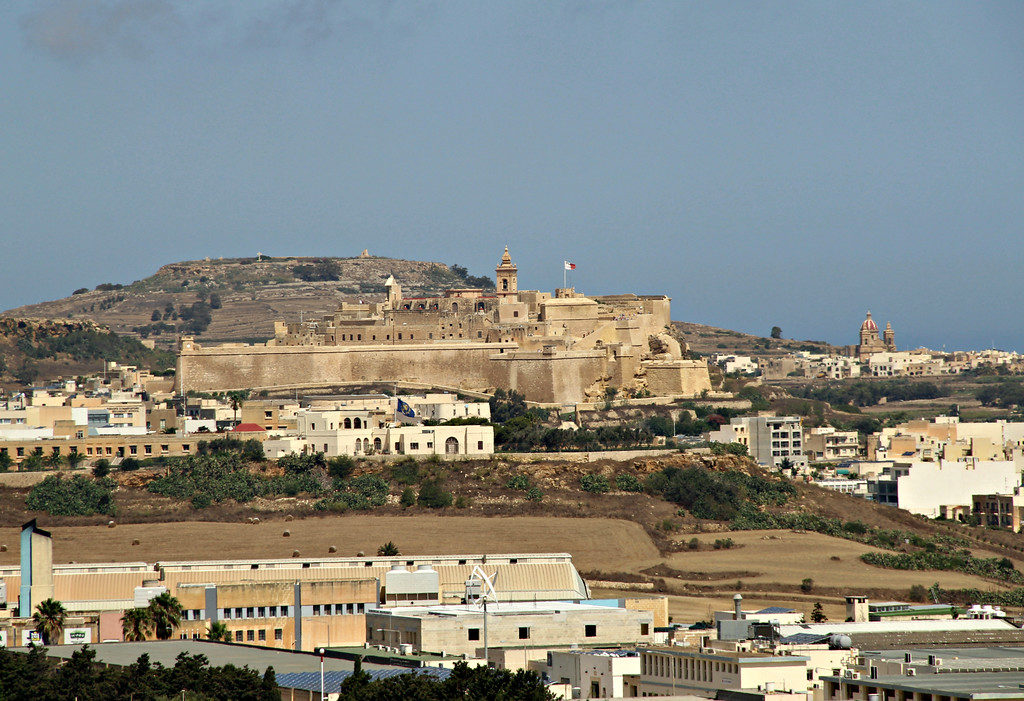

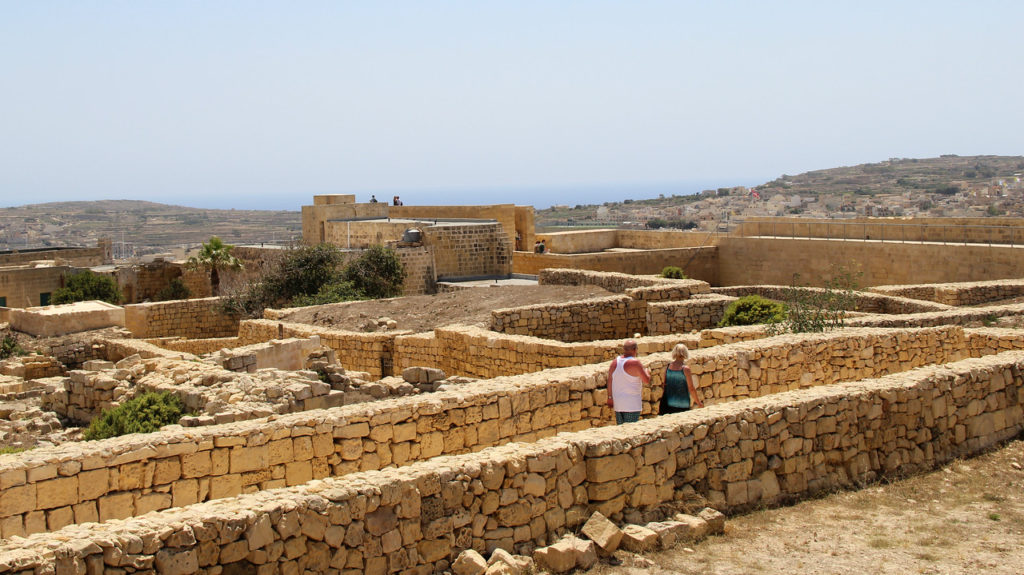
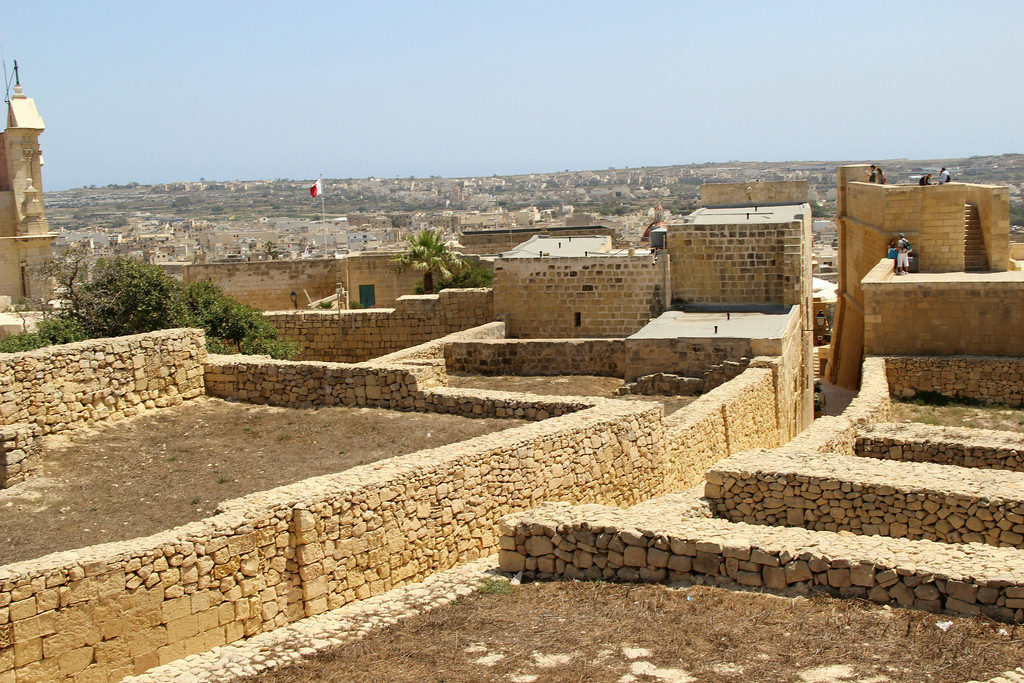
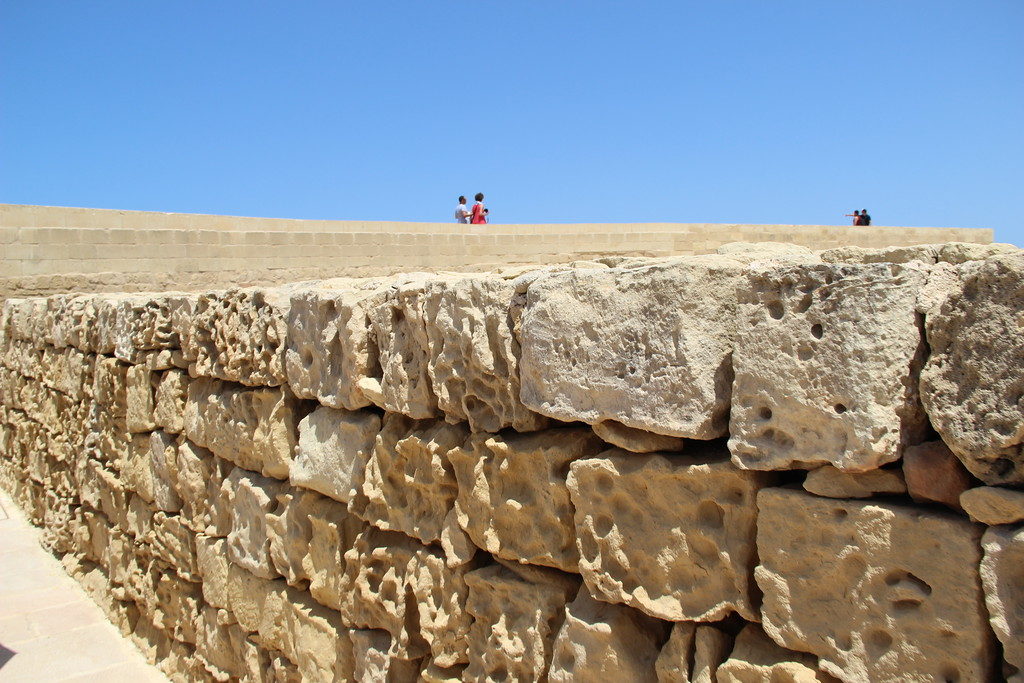
As we wound our way around the paths, we came to the Battery which served as an artillery platform. Guns and canons were here which were designed to protect the fortification walls and the area immediately outside the walls (rather than being for long range defense). Tall defensive walls are vulnerable if penetrated near the bottom – the whole wall could collapse – so this kind of protection was very important. In the 17th and 18th Centuries, there were 30 to 40 artillery pieces and nearly 400 muskets. A Gunpowder Magazine stored the gunpowder necessary for the weapons. Today the Battery provides great views of Gozo. The church with the red dome is the Church of St. Laurence, which was completed in 1889. We enjoyed seeing the Citadel but mainly walked the streets and enjoyed the views from the Battery. After doing some more research about the Citadel for this blog, I think there was a lot more we could have seen. If you visit, give yourself enough time to see the museums and to explore the site in more depth.
